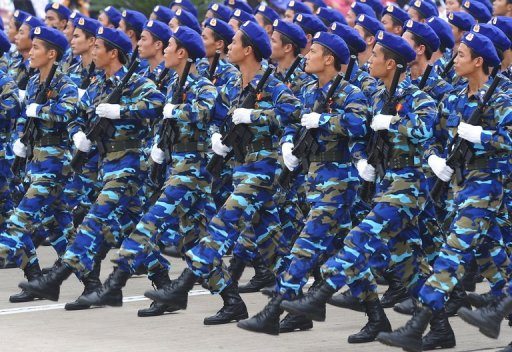The United States has announced a partial lifting of its ban on arms sales to Vietnam to help its maritime security, easing the embargo on Vietnam that was imposed after the end of the Vietnam War in 1975.
At the same time, the U.S. claims it has a national interest in peace and stability, but not in negotiations over the South China Sea disputes.
The State Department has taken steps to allow for the future transfer of maritime security-related defense items to Vietnam.
While the U.S. claims it does not take sides on the South China Sea disputes, it is now preparing an active policy of selling weapons to Vietnam. This is not a sensible course of action.
First of all, China and the other countries involved need to solve their disputes by way of bilateral and multilateral agreements. According to the Declaration on the Conduct of Parties in the South China Sea, related countries should solve maritime disputes peacefully.
China and Vietnam have signed an agreement on basic principles guiding the settlement of maritime issues existing between the two countries. Furthermore, the two countries established a bilateral working group to discuss joint maritime development in 2013.
However, the input of American weaponry will do nothing to help the consensus reached by the two countries. It will simply damage stability and add complexity to their disputes.
Secondly, American’s policy is not even-handed. While easing the embargo on Vietnam, America is maintaining its ban on arms sales to China, and limiting the export of other high-tech manufacturing. This policy is in conflict with regulations and codes of conduct concerning free trade.
Moreover, the policy is a clear extension of America’s interference with the balance of power in the region. With the help of the China-ASEAN Free Trade Zone and the China-ASEAN (10+1) Conference, China and the other countries involved have established stable economic ties and a platform for dialogue. America’s ‘rebalancing Asia’ strategy is losing support. Therefore, America is now resorting to arms sales to win back its influence.
The policy stands in direct contradiction to America’s stated aim of maintaining peace and stability, and it will hinder the development of the Sino-U.S. relationship. Chinese President Xi Jinping reached a consensus with U.S. President Barack Obama on building a new model relationship between major countries during his visit to America in 2013. In a talk with Chinese Foreign Minister Wang Yi, Obama said he would hold discussions with Xi to further promote this new model during APEC meetings in November.
To promote Sino-U.S. relationship will requires the elimination of cognitive bias. The essence of the new Sino-U.S. relationship is mutual respect, no conflict, and mutual benefit. ‘Conflicts’ could be direct, or they could be potential and indirect ones. America should take note that this short-sighted policy of arms sales to China’s neighbors will be taken as an example of indirect conflict.











